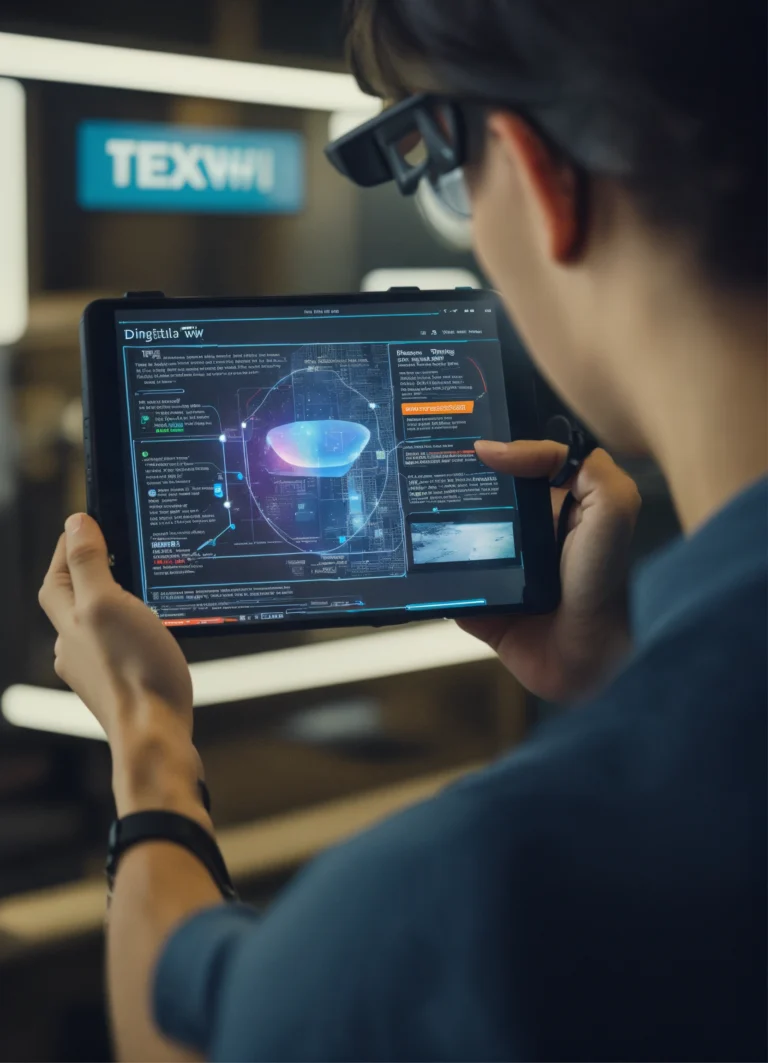Most modern enterprises rely heavily on IoT technology to streamline operations, increase efficiency, and improve overall performance. However, with this increased connectivity comes security risks that can potentially expose your company to cyberattacks. It is crucial to understand the implications of integrating IoT devices into your business processes and to implement strong security measures to safeguard your sensitive data and maintain the trust of your customers.
The Rise of IoT
Defining the Internet of Things
For your journey into exploring the impact of IoT on modern enterprises, it’s crucial to first define what the Internet of Things (IoT) is. Simply put, IoT refers to the network of interconnected devices that collect and exchange data over the internet. These devices can range from everyday objects like smart thermostats and wearable fitness trackers to industrial machinery and vehicles that are equipped with sensors.
The Growing Presence of IoT in Modern Enterprises
An important aspect to consider is the growing presence of IoT in modern enterprises. Today, businesses across various industries are increasingly turning to IoT solutions to enhance efficiency, improve decision-making processes, and drive innovation. This technology allows for real-time monitoring, automation of tasks, and the generation of valuable insights from the data collected by connected devices.
This trend is reshaping traditional business models, offering new opportunities for revenue generation, cost savings, and improved customer experiences. However, it also presents challenges such as cybersecurity risks, data privacy concerns, and the need for specialized skills to manage IoT systems.
Operational Efficiency
Even in the rapidly changing landscape of modern enterprises, operational efficiency remains a top priority for organizations looking to stay competitive. With the integration of IoT technology, businesses can transform their operations by leveraging real-time data to streamline processes, reduce downtime, and optimize their supply chain management.
Streamlining Processes with IoT
One of the key benefits of incorporating IoT into your operations is the ability to streamline processes. By connecting devices and systems, you can automate tasks, monitor performance, and identify inefficiencies in real time. This visibility allows you to make data-driven decisions that optimize workflows, improve resource utilization, and ultimately drive greater operational efficiency.
Reducing Downtime and Increasing Productivity
Productivity is crucial for the success of any enterprise, and IoT plays a pivotal role in reducing downtime and increasing efficiency. By implementing IoT sensors and predictive maintenance systems, you can proactively identify potential equipment failures, schedule maintenance tasks, and avoid costly downtime. This proactive approach not only increases equipment reliability but also enhances productivity by ensuring that your operations run smoothly without unexpected interruptions.
It is vital to prioritize predictive maintenance strategies to prevent downtime and maximize productivity. By continuously monitoring equipment performance and implementing predictive maintenance schedules based on real-time data, you can minimize disruptions and keep your operations running at peak efficiency.
Improving Supply Chain Management
Improving the efficiency of your supply chain is critical for meeting customer demands and staying ahead of the competition. IoT technology enables end-to-end visibility into your supply chain, allowing you to track inventory levels, monitor shipment status, and optimize logistics processes. By leveraging this real-time data, you can enhance inventory management, reduce lead times, and improve overall supply chain performance.
Processes within your supply chain can be optimized using IoT solutions to gain **real-time insights** into inventory levels, demand forecasting, and transportation logistics. By **analyzing** this data, you can identify bottlenecks, streamline processes, and ultimately create a more agile and responsive supply chain.
Data-Driven Decision Making
Despite the proliferation of data in the modern business landscape, many enterprises struggle to extract meaningful insights from it. This is where IoT comes into play, revolutionizing data collection and analysis to enable **you** to make more informed decisions.
The Power of IoT-Generated Data
Data generated by IoT devices provides **you** with a massive amount of real-time information about various aspects of your business operations. This data can include customer behaviors, machine performance metrics, environmental conditions, and much more. By harnessing this wealth of information, **you** can gain valuable insights into your processes and performance, leading to more efficient operations and strategic decision-making.
Unlocking Insights with Advanced Analytics
Any organization can benefit from leveraging advanced analytics tools to make sense of IoT-generated data. By utilizing techniques such as machine learning, predictive modeling, and data visualization, **you** can uncover patterns, trends, and correlations that would otherwise remain hidden. This can help **you** identify opportunities for improvement, anticipate market trends, and mitigate risks effectively.
- Data Visualization: Helps **you** understand complex data through visual representation.
- Machine Learning: Enables **you** to predict outcomes based on historical data patterns.
Informed Decision Making in Real-Time
An organization that embraces IoT is empowered to make informed decisions in real-time based on up-to-the-minute data insights. **You** can respond swiftly to changing market conditions, customer preferences, and operational issues, gaining a competitive edge in today’s fast-paced business environment.
Plus, **you** can set up automated alerts and triggers that prompt immediate actions when predefined thresholds or conditions are met. This proactive approach ensures that **you** stay ahead of potential problems and capitalize on emerging opportunities without delay.
Enhanced Customer Experience
Personalization through IoT-Enabled Interactions
Customer personalization is key in the modern business landscape. With IoT devices collecting data on customer preferences, behaviors, and habits, businesses can tailor their products and services to meet individual needs. Imagine receiving personalized recommendations based on your previous purchases or having smart devices adjust settings to your preferences automatically. This level of customization enhances the overall customer experience, fostering loyalty and satisfaction.
Proactive Customer Service with IoT
Customer service has evolved with the integration of IoT technology. Now, businesses can anticipate issues before they arise and provide solutions proactively to enhance customer satisfaction. IoT sensors in products can detect potential problems and alert both the customer and the company, enabling quick resolution and minimizing disruptions to the customer’s experience.
This proactive approach not only improves customer satisfaction but also reduces costs for businesses by preventing larger issues that may lead to returns or replacements.
Creating Immersive Experiences with IoT
Interactions with customers can be transformed into immersive experiences through IoT. Imagine walking into a store where your preferences are instantly recognized, and personalized recommendations are made to enhance your shopping experience. IoT devices can create a seamless environment where customers feel valued and understood, ultimately leading to increased engagement and loyalty.
Plus, businesses can gather valuable data on customer behavior and preferences through these immersive experiences, allowing for further customization and targeted marketing strategies.
Cybersecurity Concerns
Once again, as businesses embrace the Internet of Things (IoT) to enhance efficiency and productivity, cybersecurity concerns come to the forefront. The interconnected nature of IoT devices poses significant risks to modern enterprises, making it crucial to address potential vulnerabilities and implement robust security measures.
The Vulnerabilities of IoT Devices
One of the key challenges associated with IoT devices is their susceptibility to security breaches. **Weak** encryption protocols, **inadequate** authentication mechanisms, and **outdated** software can create entry points for cyber attackers. **These vulnerabilities** leave your network and sensitive data exposed to potential threats, ranging from **data theft** to **disruption** of operations.
Protecting Against IoT-Based Attacks
With the rise of IoT-based attacks, it is vital to **implement** proactive security measures to safeguard your network and **protect** your assets. **By deploying** **intrusion detection systems**, **firewalls**, and **security patches**, **you can** **defend** against potential threats and **mitigate** the **risks** associated with IoT devices.
**IoT-based** attacks are **becoming** more **sophisticated**, **targeting** not only **traditional** endpoints but also **vulnerable** IoT devices. **Ensuring** that **your** **security** **solutions** are **up-to-date** and **capable** of **detecting** these **evolving** threats is **critical** in **maintaining** a **secure** **network**.
Implementing Robust Security Measures
The **integration** of **robust** security measures into **your** IoT **ecosystem** is **paramount** to **shielding** your **enterprise** from **potential** **cybersecurity** threats. **By** **establishing** a **comprehensive** **security** **framework** and **adhering** to **best** **practices**, **you can** **enhance** the **resilience** of **your** **network** and **safeguard** against **malicious** **activities**.
**Robust** **security** **measures**, **such as** **encrypted** **communications**, **regular** **vulnerability** **assessments**, and **employee** **training** **programs**, **are** **vital** **components** **of** **a** **secure** **IoT** **environment**. **By** **taking** **a** **proactive** **approach** **towards** **security**, **you** **can** **build** **a** **strong** **defense** **against** **potential** **cyber** **threats** **and** **ensure** **the** **integrity** **of** **your** **enterprise** **network**.
New Business Models and Opportunities
IoT-Enabled Revenue Streams
After implementing IoT solutions, modern enterprises have the opportunity to explore **new business models** that leverage connected devices and data. **Strong** revenue streams can be developed through subscription-based services, pay-per-use models, and predictive maintenance offerings. These innovative approaches not only open up **new income** avenues but also foster **customer loyalty** through personalized experiences and proactive support.
Creating New Products and Services with IoT
Models **One** way IoT impacts modern enterprises is by enabling the creation of **new products** and services that were previously unattainable. By embedding sensors and connectivity into physical objects, businesses can offer **smart devices** that provide valuable insights to customers, enhance functionality, and **drive** efficiency. This shift towards IoT-centric offerings allows companies to stay **competitive** in today’s market and cater to the increasing demand for connected solutions.
Business **With** the rise of IoT, organizations can develop **intelligent** products like connected home appliances, wearable health monitors, and **smart industrial** equipment. These interconnected devices not only enhance user experience but also generate **vast amounts** of data that can be utilized for further **innovation** and improvement.
Partnerships and Collaborations in the IoT Ecosystem
Any **Developing** IoT initiatives often require collaborations with **technology** providers, data analytics firms, and even competitors to build a robust **ecosystem**. By partnering with **key players** in the IoT space, enterprises can access complementary **expertise**, share resources, and accelerate **time-to-market** for innovative solutions. These strategic alliances not only streamline development processes but also **unlock** fresh opportunities for growth and market expansion.
To wrap up
With this in mind, the impact of IoT on modern enterprises cannot be overstated. As you navigate the ever-evolving landscape of technology in the business world, it is crucial to embrace the opportunities that IoT presents for efficiency, innovation, and growth. By leveraging IoT devices and data, you can streamline operations, improve customer experiences, and stay ahead of the competition. It is crucial to stay informed about the latest IoT trends and best practices to help your enterprise thrive in this digital era.
FAQ
Q: What is the impact of IoT on modern enterprises?
A: IoT has revolutionized modern enterprises by enabling real-time data collection, analysis, and automation of processes. This technology provides businesses with valuable insights into their operations, leading to increased efficiency, cost savings, and improved decision-making.
Q: How does IoT benefit businesses in various industries?
A: IoT benefits businesses across industries by improving operational efficiency, enhancing customer experience, and enabling the development of new revenue streams. For example, in manufacturing, IoT enables predictive maintenance of equipment, while in retail, it facilitates personalized marketing campaigns based on customer behavior.
Q: What are some of the challenges associated with implementing IoT in enterprises?
A: Some of the challenges associated with implementing IoT in enterprises include data privacy and security concerns, interoperability issues between different IoT devices and platforms, and the high initial cost of deployment. Additionally, managing and analyzing the vast amount of data generated by IoT devices can be overwhelming for businesses without proper infrastructure and expertise.





